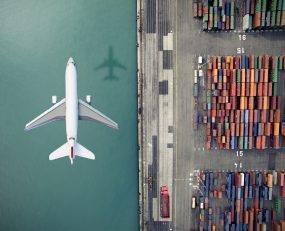Air Freight Rates May Be Spiking Now but a Fall in Rates Looks Possible
The airline sector is recovering. As Willie Walsh, the former CEO of British Airways and now Director General of IATA said on Thursday, “the recovery in air travel is gathering steam as governments in many parts of the world lift travel restrictions.
States that persist in attempting to lock-out the disease, rather than managing it, as we do with other diseases, risk missing out on the enormous economic and societal benefits that a restoration of international connectivity will bring,” Willie Walsh is, of course, referring to China, which continues the most savage response to COVID-19 outbreaks. This is placing a break on the bounce-back of air traffic at the global level.
The rest of the world is doing its best to compensate. Total air traffic measured in revenue passenger kilometers increased 115% year-on-year in February 2022, although this is still 45.5% less than the volumes seen in February 2019. In particular international traffic is recovering violently, with a 256.8% increase year-on-year, although this is 59.6% lower than 2019, showing how severe the crash in international air traffic has been.
In terms of demand, air cargo is a very different market. Over the past two years the market for cargo has often been extraordinarily strong in the face of a near absence of belly freight. Demand is still respectable, with global traffic measured in cargo ton-kilometers up 2.9% year-on-year for February, with a slight bias to domestic operations, possibly due to e-commerce traffic in markets such as the US. However, IATA also reports that actual ton-kilometers, that is the volume of cargo carrying capacity available, increased 12.5% year-on-year in February, whilst load-factors fell 4.9%.
Cargo capacity is still 5.6% below February 2019, but demand is not increasing as fast as it was in December 2021. If these trends are sustained the implications are that the balance between air cargo capacity supply and air cargo demand will tip towards lower prices.
The disruptions in China and Hong Kong are taking their toll, as is the avoidance of Russian airspace by many airlines, with air freight rates reportedly spiking on China-Europe routes in recent days.
However, as Willie Walsh commented “Demand for air cargo continued to expand despite growing challenges in the trading environment. That is not likely to be the case in March as the economic consequences of the war in Ukraine take hold. Sanction-related shifts in manufacturing and economic activity, rising oil prices and geopolitical uncertainty will take their toll on air cargo’s performance”.





Leave a Reply